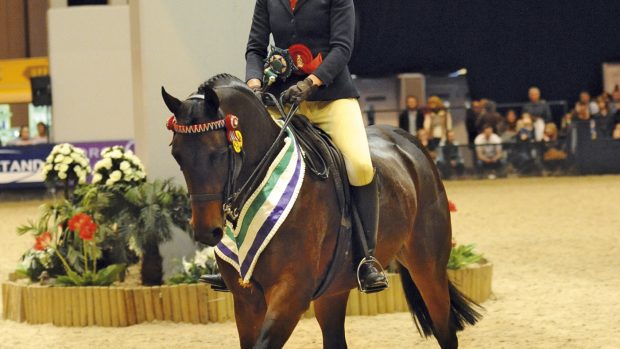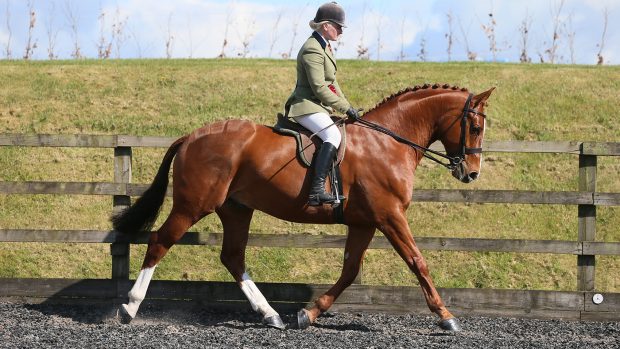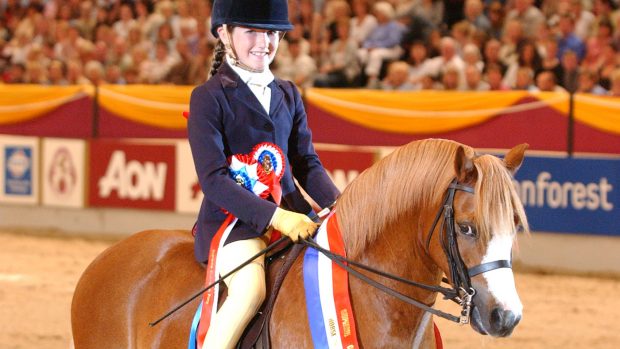The Welsh Section C shares the same height restriction as the Welsh Section B at up to 13.2hh but is a very different pony in stature. This section of the Welsh studbook is for ponies of a true cob type – much heavier built than either the Section A or Section B.
The traditional Section C should have extravagant knee and hock action, but many ridden Section Cs now show some knee action with more movement through from the shoulder.
All colours are permitted except skewbald and piebald and white patches on the body are both acceptable and predominantly seen in this section of the breed.
As with all genuine native ponies, they should be shown in as natural a state as possible.
The Welsh Section C is a good all-rounder, capable of taking part in hunting, showing, jumping, driving and more with an adult or child. This animal can carry a far greater weight than a Section B and yet is still a suitable candidate for most children.
When breeding ponies across different sections of the Welsh studbook the Society’s rules dictate that the animal of the greater height of the coupling is the section into which the progeny will be registered. For example a Section A crossed with a Section C will result in a registered Section C foal. For this reason caution should be taken when crossing Section C ponies with their smaller Welsh counterparts.
Some showing societies will not permit small section C ponies to compete in classes that they could be eligible for due to their height. A 12.2hh Section C should be eligible for an M&M First Ridden class but some societies restrict eligibility to Section A and B.
Section C ponies may loose some of their breed qualities if cross bred with Section A or B ponies and the progeny will be much smaller than its 13.2hh competitors when shown in its own breed class.
However, a small Section C is a fantastic all-rounder and usually quieter in temperament and can carry more weight than its native competitors.
Welsh Pony and Cob Society breed definition
- Strong, hardy and active, with pony character and as much substance as possible.
- Any colour, except piebald and skewbald.
- Head – Full of qualityand pony character. A coarse head or Roman nose are very undesirable.
- Eyes – Bold, prominent and set widely apart.
- Ears – Neat and well set.
- Neck – Lengthy and well carried. Moderately lean in the case of mares, but inclined to be cresty in the case of mature stallions. Strong but well laid back shoulders.
- Forelegs – Set square and not tied in at the elbows. Long, strong forearms. Well developed knees with an abundance of bone below them. Pasterns of proportionate slope and length. Well-shaped feet and dense hoofs. When in the rough, a moderate quantity of silky feather is not objected to but coarse, wiry hair is a definite objection.
- Middlepiece – Muscular, strong and well-coupled back and loins. Deep through the heart and well-ribbed up.
- Hind quarters – Lengthy and strong. Ragged or drooping quarters are objectionable. Tail well-set on.
- Hind Legs – Second thighs, strong and muscular. Hocks, large, flat and clean, with points prominent, turning neither inward nor outwards. The hind legs must not be too bent and the hock not set behind a line falling from the point of the quarter to the fetlock joint. Pasterns of proportionate slope and length. Well-shaped feet and dense hoofs.
- Action – Free, true and forcible. The knee should be bent and the whole foreleg should be extended straight from the shoulder and as far forward as possible in the trot. Hocks flexed under the body with straight and powerful leverage.




